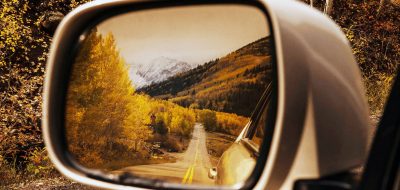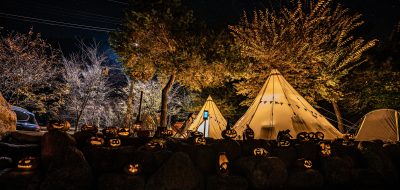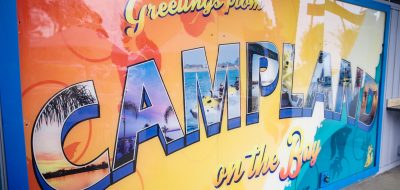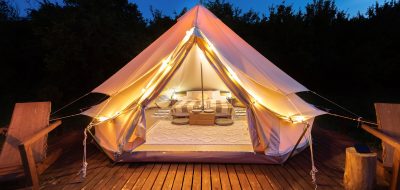
Search engines and the Internet have made finding out-of-the-way Moroccan Restaurants and hand-carved Native American flutes as easy as clicking a few keys. Unfortunately, finding a great boondocking campsite to commune with Mother Nature is not. Sure, you can find “boondocking” campsites, but often this simply means “no hook-ups.”
Depending on what you are looking for, the term boondocking can be ambiguous and unhelpful, referring to everything from a campsite in a busy national or state park, where you can hear your neighbor’s TV or electric toothbrush, to the opposite extreme, what western desert rats call “coyote” camping, where few if any campers are within sight.
Once you have learned the tricks of camping without hookups and a readily available support system (dump station, potable water supply), you can expect to get bitten by the “deep woods” or “open desert” bug. You can tell when you’ve been bitten when you start dreaming of quiet leafy glades by babbling brooks with two-foot rainbow trout leaping merrily from dark pools. Or maybe you visualize a lone desert campsite under a milky way crammed with stars as bright as lasers and a coyote serenade just up the arroyo.
Until you’ve ventured out into the nether reaches of our natural lands, you will be among those asking, “Why do you boondock when there are nice campgrounds?” After you discover your first few hidden campsites, you will be among those answering that question.
Don’t bother Googling for those perfect spots. We boondockers love to talk about out secret hidden campsites, deep into a national forest over old logging roads or parked on the banks of a seasonal wash filled with screwbean mesquite, catclaw acacia, and a carpet of desert wildflowers–with views that stretch forever. Yes we love to talk about them, and we’ll tell you everything but where they are and how to get there.
But you can find your own—just don’t expect to accumulate these perfect sites like you would download a list from the “secret boondocking campsites” Web page. What you will do is start your own ongoing collection of discoveries, gathered over your years of RVing, places that you return to as you wander the nation’s two-lane backroads and hidden byways. My collection started when I found out how many nifty campsites were scattered about once off the highways, places to spend one or a few nights with only the sounds of a stream splashing down a canyon and the afternoon wind rustling the pine boughs like whispers from the forest creatures. I began looking for private, isolated nests away from the flow of commerce and busy highways where I could stop whenever I was traveling and retraced my routes.
With GPS it’s easy to plot all your secret campsites and to find them again years later. But first you have to find them. There are several methods. Next Saturday I will show you how I find good back-to-nature spots in whatever part of the country I roam.





Pingback: how to make a website
Pingback: url
Pat
Bob
Great information. Thank You
Bob Difley
Good questions, RCFlyer. I will take your questions up in the next (or following) blog. The photo in the blog, by the way, is along the Lostine River in northeastern Oregon on route 82 on the way to Joseph at the base of the Wallowa Mountains. From the town of Lostine head south along the Lostine River until you enter the Wallowa-Whitman National Forest. There are several isolated campsites along the river.
RCFlyer
GREAT picture (looks like a great trout stream), nice story, good reading – keep it up.
We haven’t ventured out boondocking yet, but when we bought our rig we had that in mind, and now we feel experienced enough to start. I’m hoping you’ll address issues “newbies” might be concerned about like; how to know when you can overnight (are you on public/private land – do you need permission); safety – coyotes are fine, however some two-legged woodland dwellers are not; access – I’ve gotten into a few places in “parks where I’ve wished my rig was 27′ instead of 37′; and “ownership” – I’ve actually had a gentleman come up to me in a park and tell me I was in “his space” – he then asked us to move to a different space! I politly declined. If your boondocking you can’t reserve a space, so I guess if you get to that beautiful, remote spot and someone is ther you just move on.
Anyway, looking forward to this new format – keep it up!
Pingback: Finding Boondocking Campsites
2oldman
Nice writing. Enjoyable reading.
I too love to find out of the way places, but pulling a 5er makes it just a bit more scary. If possible I’ll stop in a safe area and ride my bike in.
Look forward to your next installment.
Bob Difley
Arizona’s Quartzsite is “boondoocker” heaven to nearly a million RVing snowbirds in the winter. Since the town is surrounded by Bureau of Land Management (BLM), which allows camping just about anywhere, there is plenty of land to spread out. The desert surface in most areas is covered with “desert pavement” that makes the surface hard and supportive as well as providing less dust to be blown about by the desert wind. You can stay near the entrance and be part of the 10,000 other RVers or venture inland where the rigs thin out and find a nice mesquite tree to camp under and have the spot all to yourself, and still be within minutes to town and all the quirkyness that Quartzsite offers as well being a ready supply point.
John Hilley
I’m camped at that same spot now. There probably are all 10,000 of those RVs here right now. It is a great place however.
Fred Golden
Hi,
I find that when you post a message like “Where are you favorite boondocking sites” you get very few responces!
My favorites are listed at freeCampgrounds.com and are mostly off road recreations areas in the desert, where the camping is free for a couple of weeks at a time.
The one boondocking site I found in Sequoia National Park is very difficult to find, so I have no way of telling anyone how in the world to get there.
My favorite Quartzsite campground is 8 miles north of town, on hard packed gravel that is fairly dust free, take 95 north to Plomosa Road, then up to 3 miles east is room for 10,000 RV’s. Usually you have 100 or more feet between RV’s.
Fred.